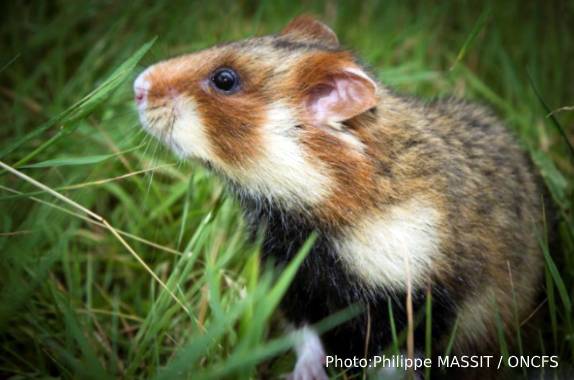Summary
The collective AECM Hamster_01 was introduced in 2014 in the territorial Agri- Environment-Climatic Plan (PAEC) “Great Hamster of Alsace” (“Grand Hamster d’Alsace”) to protect the European Hamster in Alsace. Hence, the contract solution aims at encouraging the provision of a public good (remarkable biodiversity) for which the supply is limited to a specific geographical area. Since its implementation, ten territories spread among 3 eligible static protected zones contracted the measure. It represents about 140 farmers and 3000 ha. In addition to farmers, this scheme also involves various key stakeholders: the association AFSAL acting as an intermediary and regulator and in charge of allocating the public financial support among farmers; the Chamber of Agriculture of Alsace; the French Agency for Biodiversity (OFB); the Departmental Directorates of Territories (DDT) of the Bas Rhin and Haut Rhin Departments. The collective payment is conditioned to the implementation of crops and agricultural practices in favour of the survival of the European hamster on at least the targeted percent of the agricultural land of the territory. The individual “burrow premium” is conditioned to the identification of at least one hamster burrow on the agricultural plot.

Objectives
- Protect the habitats and populations of European hamster;
- Maintain the good functioning of the entire ecosystem associated with the specie.
Public Goods



Problem description
Cricetus cricetus is an umbrella indicator specie contributing to agricultural soil quality.
In France, its presence is limited to a few municipalities in Alsace. Threatened by the development of maize cultivation and its reputation as an agricultural pest, it is classified in the list of endangered species and protected by the Habitats Directive since the early 1990s. Operations aiming at maintaining European Hamster populations were carried out since the late 1990s but failed to meet the objectives. Following a complaint submitted in 2006, the Court of Justice of the European Union convicted France in 2011 for its lack of effective protection. 2 individual agri-environmental measures supporting the implementation of crops and agricultural practices in favour of the European hamster were introduced during the 2007-2013 CAP programming period. However, the lack of spatial coordination of the operations limited their impact.
Therefore, the National Hunting and Wildlife Bureau (today part of the French Agency for Biodiversity) and the Chamber of Agriculture of Alsace took the initiative of proposing a collective agri-environment climate measure (AECM) in the territorial project of the 2014-2020 CAP programming period, in addition to 4 individual AECM. In order to encourage more farmers to get involved in this approach, an individual bonus designed as a “burrow premium” was introduced in 2018 to reward the land managers of the plots on which at least one European hamster burrow was identified.
